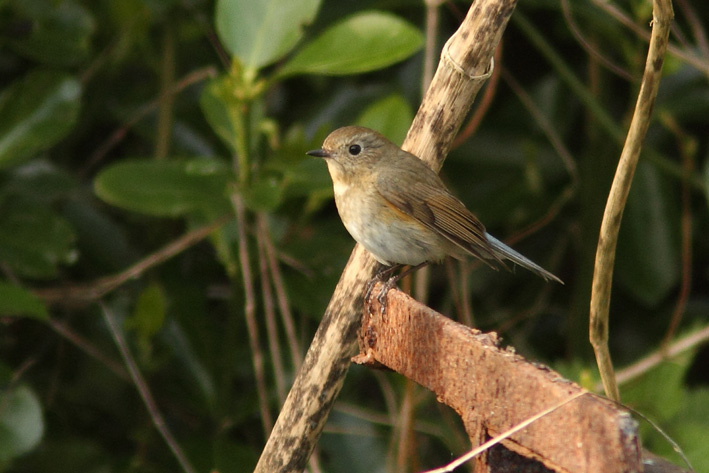
© PHOTO: HANDOUT/WILDLIFESNAPS
Birders from near and far are able to cross an item off their bucket list after viewing a wee bird that lost its way.
A red-flanked bluetail that would normally be in Southeast Asia at this time of year has been causing quite a stir in Queen's Park. Birders armed with binoculars and photographers equipped with fancy cameras descended on the park in recent days to view the visitor.
"There were a lot of bird watchers - 35 or 40," New Westminster resident Rob Butler said about the crowd on Wednesday afternoon. "If it hangs around, there would be people coming from across North America - it's so rare."
The arrival of the red-flanked bluetail in New Westminster is the first time the bird has been reported in Canada.
"It was pretty neat," Butler said about seeing the bird. "I have been over to Asia birding. I didn't see it in Asia."
A report on the B.C. Rare Bird Alert website stated that the red-flanked bluetail was found Feb. 13 by Colin McKenzie, and later confirmed by George Clulow and Mike Toochin. Both Clulow and Toochin have previously seen the red-flanked blu-etail in Asia.
"People spend their money and fly all over," Butler said. "People have these lists. It's pretty esoteric stuff. This is the first in Canada. For George, he was the first person to identify it."
Butler said some bird watchers set goals of seeing how many species of birds they can view in a year. He noted that was the premise of the 2011 film, The Big Year.
"A lot of bird watchers, they have their life lists," Butler said. "People have their own lists, they have their North American lists."
The discovery of the red-flanked bluetail in New Westminster is only the third time the bird has been found in North America. The species normally breeds in Siberia and winters in Southeast Asia, meaning it would normally be in south China, Burma, Thailand, Laos or Indonesia at this time.
Butler, a professional ornithologist who first became interested in birds as a child, is an adjunct professor at Simon Fraser University and a former senior research scientist and biologist with Environment Canada's Canadian Wildlife Services. He's also involved with Bird Studies Canada, where his work has included coordinating the British Columbia Bird Atlas.
Butler knows birds - and he also knows birding can be big business. "It's a huge market, a massive market," he said. "Vancouver city is really getting into this."
Sadhu Johnston, the City of Vancouver's deputy city manager, is the former chief environmental officer with the City of Chicago, where he developed a "bird agenda." The City of Vancouver's Greenest City 2020 action plan notes that Vancouver has some of the world's most important habitat and more than 407 bird species - making it the "perfect place" to lead the country in celebrating World Migratory Bird Day.
Butler contacted a New Westminster city councillor about the presence of the red-flanked bluetail in the Royal City.
"It is important for the city to know this," he said. "Those people coming into the city will be spending money."
Butler visited the park on Wednesday afternoon with friends who had come from Vancouver Island to see the bird. Another friend from Toronto is interested in visiting if the bird appears to be staying.
"It's an unusual year," Butler said. "There are quite a few Asian species that are showing up this year."
While there have been sightings of bram-blings, wagtails and other species from Asia, the red-flanked bluetail is the most rare bird to visit the Lower Mainland.
Butler said there's no way to know whether the visit is a onetime occurrence, or whether more red-flanked bluetails will head this way. There's also no way of knowing when the bird plans to fly the coop and head elsewhere.
"It's hard to know. Sometimes they do hang around for a long time. Other times, they just go," Butler said. "They come and go - that is the way it is with birds."
Since it was first identified last weekend, the bird has attracted flocks of people to Queen's Park, including birders from the Okanagan, Vancouver Island and Washington State.
The bird appeared quite at home in its temporary home in the treed area near the children's playground.
Reader Comments
to our Newsletter